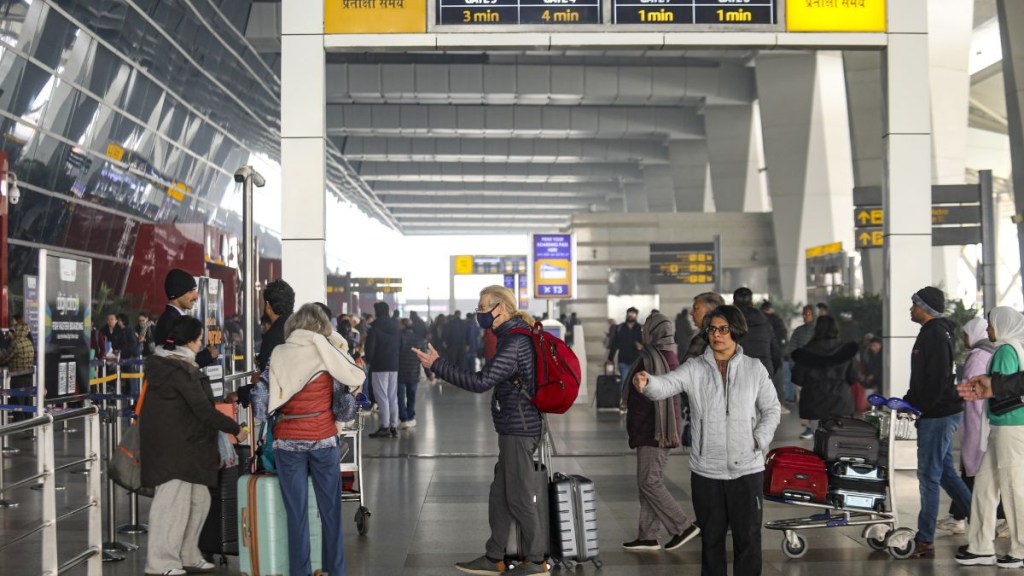The proposed tariff hike at Delhi’s Indira Gandhi International Airport (IGIA) is expected to increase domestic airfares by 1.5 to 2 percent, according to a senior official. The Delhi International Airport Ltd (DIAL), which operates IGIA, has put forward a plan to introduce different user fees based on travel class and time of travel, distinguishing between peak and off-peak hours. The airport currently has the capacity to handle around 109 million passengers annually.
DIAL CEO Videh Kumar Jaipuriar on Wednesday (February 26) said that the Yield Per Passenger (YPP) will rise from the current Rs 145 to Rs 370 once the higher tariffs are approved. The YPP, which includes airline and passenger charges, will see a 140 percent increase compared to 2006 levels when the GMR Group-led consortium took over the airport.
He explained that, as per the Airport Economic Regulatory Authority (AERA) recommendations, 70 percent of the YPP should be attributed to passenger charges and 30 percent to airline charges, whereas currently, airline charges account for 68 percent and passenger charges for 32 percent.
Jaipuriar clarified that with the revised tariffs, domestic airfares are likely to increase by 1.5 to 2 percent on average, while international fares will see a rise of less than 1 percent. The tariff proposal, which is currently under review, has been submitted to AERA for approval for the period from April 1, 2024, to March 31, 2029. At present, passengers pay a User Development Fee (UDF) of around Rs 77.
Comparing YPP figures across airports, Jaipuriar pointed out that the amount stands at Rs 478 in Bangalore, Rs 533 in Chennai, and Rs 637 in Kolkata. Internationally, the YPP is significantly higher, with Heathrow Airport in London at Rs 3,100, Schiphol in Amsterdam at Rs 1,507, Hong Kong at Rs 946, and Paris at Rs 1,770. He noted that these values fluctuate based on exchange rates.
Currently, around 44 planes remain grounded at Delhi airport. DIAL is working on enhancing its facilities across its three terminals—T1, T2, and T3—which handle approximately 1,300 flights daily.
Delhi Airport’s T2 to be closed for 4-5 months
As part of infrastructure upgrades, T2 will be temporarily closed for four to five months starting in April, while the Instrument Landing System (ILS) at one of the runways will be improved to enhance low-visibility landing capabilities. During this period, the affected runway will be non-operational, and before T2’s closure, the renovated section of T1 will be made operational. Additionally, a part of T3 will be converted for international operations.
Jaipuriar emphasised DIAL’s commitment to investing in passenger experience, stating that since taking over the airport in 2006, the company has invested Rs 30,000 crore. It has also contributed Rs 25,000 crore in revenue sharing with the Airports Authority of India (AAI) and paid Rs 192 crore in dividends. Despite these investments, DIAL’s accumulated losses stood at Rs 2,900 crore as of December 2024.
The Association of Private Airport Operators (APAO) has expressed support for DIAL’s proposed variable tariff model, calling it a globally recognised approach that balances affordability and financial sustainability. APAO highlighted that the class-based UDF structure and peak/off-peak pricing create a fair and efficient pricing mechanism.
The association also noted that a balanced distribution of UDF between arriving and departing passengers ensures equitable cost-sharing while competitive landing and parking fees help maintain operational efficiency and cost-effectiveness.

